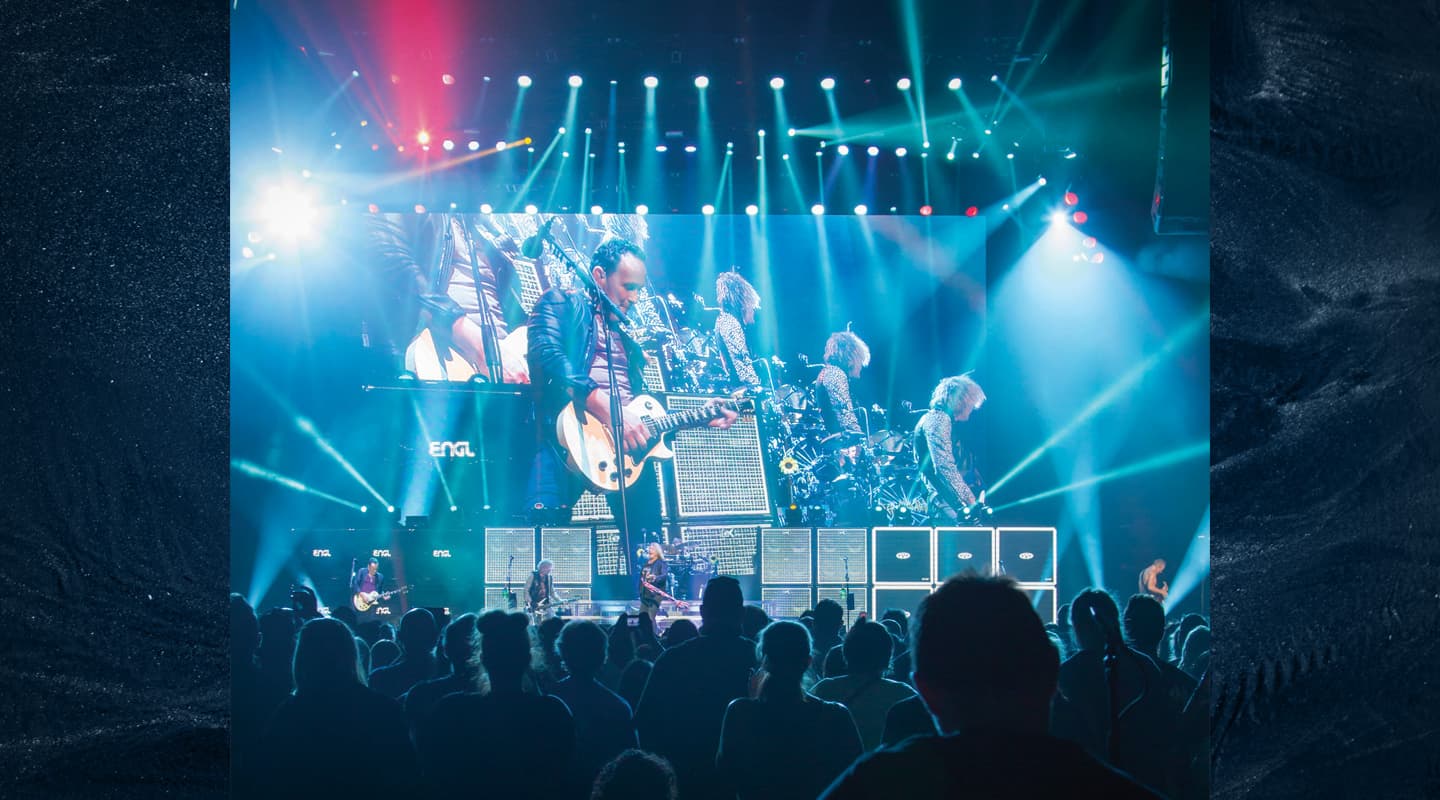
Rock It, Yeah: Def Leppard Live
Def Leppard has been touring non-stop for 15 years. AT checks in on a finely-tuned rock ’n’ roll machine.
It’s easy to poke fun at Def Leppard’s outrageously popular Pour Some Sugar On Me music video of the late ’80s… so I’m going to.
If you’ve not seen the clip since perhaps a late-night ABC Rage session, then it’s worth joining the other 18.1 gazillion viewers on YouTube and checking out a band in its strutting/preening pomp.
Lead singer Joe Elliot cuts a dashing figure in his self-referential Def Leppard singlet and shredded denim. Steve Clark’s Les Paul is hitched so low he’s just about dragging it around the stage. Rick Allen’s customised kit is big on Simmons drum pads (nothing says ’80s like a SimmDrum). There’s plenty of ‘lean in and share the mic’ action, lasers and slo-mo Eddie van Halen-style guitar calisthenics. The crowd (or at least what we see of the crowd) all look like Meg Ryan (circa When Harry Met Sally) and are as equally excited… saying that, there’s one chap conspicuous for his commodore’s naval hat. It’s a joyous, stupid, singalong classic that you’d have to be dead or Sam The Eagle not to enjoy.
Fast forward nearly 30 years and very little has changed: a Def Leppard gig is big, loud, unselfconsciously boof-headish, and none the worse for it.
ONE LUMP OR TWO?
Ronan McHugh is the band’s front of house engineer. He was sucked into Def Leppard’s orbit while the band was recording Euphoria in the late ’90s. Having stepped into the job of engineer in a Dublin studio he was tapped for the FOH role when they took the new album on tour. “I was working a lot on the album’s vocals — overdubs mainly,” recalls Ronan. “But I think Joe liked my affinity with his vocal and that gave him confidence I would be right for the live job.”
In this respect it’s easy to forget that Def Leppard is a vocal outfit as much as they are hair metal/cock rock plank spankers. There’s more nuance and art than perhaps the band might be given credit for.
“They’re a heavy rock band but they’re also a big vocal band,” concurs Ronan. “The vocals are the most important component of the mix and keep me the busiest. Then the guitars, then Rick’s kit — he’s the ‘Thunder God’, after all, and you’ve got to mix drums accordingly. So it’s a big, loud rock show but with vocals more prominent than most.”
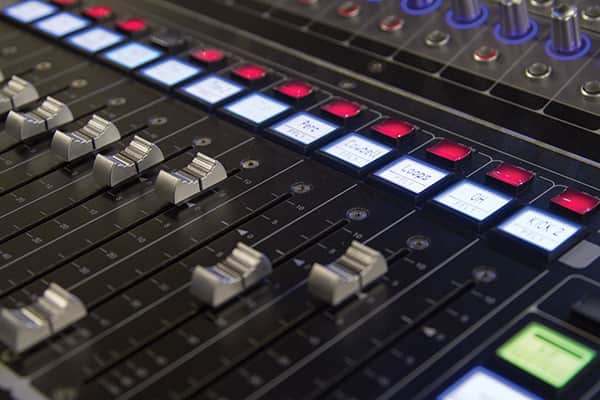
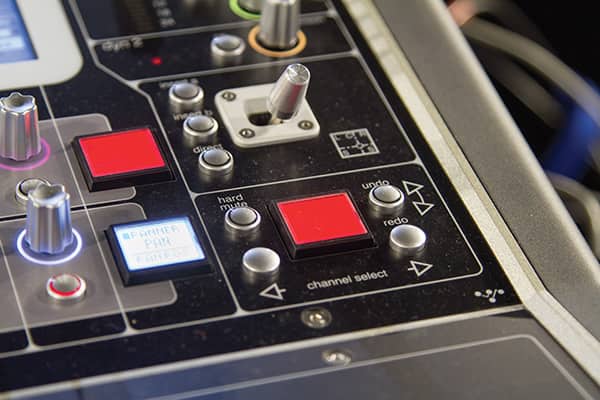

XL4 OR D5?
When Ronan McHugh first toured with Def Leppard he pioneered the use of the Digico D5 with a Midas XL4 as his back up… talk about the yin/yang of mixing in the early noughties!
“The D5 was new to the scene and I couldn’t source it in every territory so I’d switch to the XL4 at times,” recalls Ronan. “I wasn’t totally sold on Digico until they came out with the SD series, which have been awesome. I’ve been using the SD7 or SD5 ever since.
“The SD’s 192k converters really help. The front end sounds more analogue to me than other digital mixers. I’d go as far to say that they sound more like a Midas than a Midas digital mixer.
“And, yes, I was like everyone else, cranking the crap out of the XL4 preamps and loving the sound. So it took a while to get out of that habit.”
RIDING FADERS FOR DEAR LIFE
There’s more to mixing a Def Leppard gig than jacking the master fader to 11, kicking back in your leather pants and watching the crowd erupt.
“I don’t get a minute to kick back and fine tune EQ. I’m mixing the whole time,” notes Ronan, who doesn’t own a pair of leather pants. “Joe will sing in full voice then switch to falsetto in the second half of the line. He’s constantly swapping, with as much as 10dB jumps in level. At other times Phil will occasionally sing the melody and Joe will take the high harmony. So you need to be on your toes throughout.”
Lead singer, Joe Elliot, is big on the stage histrionics, as you’d expect, including the occasional exaggerated motion of pulling away from the mic when letting rip.
“His vocal mic technique is generally very good. I’d prefer if he didn’t pull the mic away but an 1176 plug-in helps me deal with that.
“We use a Beta 58 capsule on Joe’s vocal. Have I shopped around? Millions of times. At the start of every tour we try other mics but we’ve always come back to the Beta 58. I think it works so well because of the way Joe switches from chest voice to falsetto — there are other mics superior in the falsetto register but none that are as good across the board.”
then there's Rick’s kit — he’s the ‘Thunder God’, after all, and you’ve got to mix drums accordingly
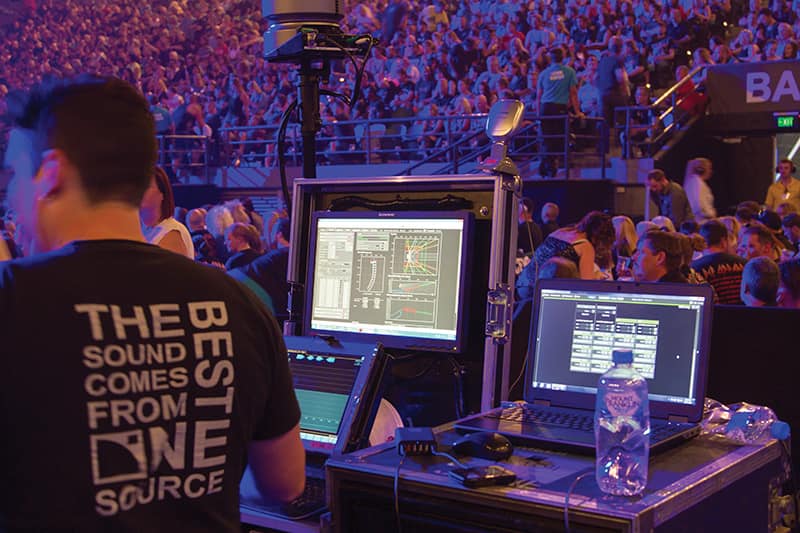
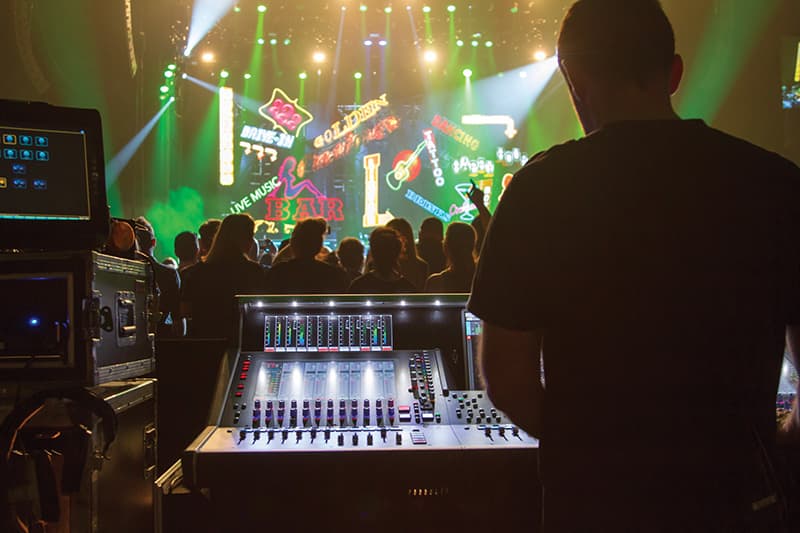
LESS MICS PLEASE, WE’RE BRITISH
Ronan keeps his mix within the console using Waves plug-ins along with board EQ and compression: the aforementioned Waves emulations of the 1176 and Pultec EQ on lead vocal, an API 2500 compressor on the drums group, DL2 limiter on bass guitar, as well as a SSL bus compressor, Waves C6 multiband compressor and L2 on the master bus. There is an outboard exception: Ronan has Distressors sitting across the backing vocal mics.
Apart from vocal mics, the rest of the stage sources are mostly direct. Ronan has been using Palmer DIs on the guitars for many years now. Phil Collen’s guitar rig has moved from JMP amps and a Palmer DI to a Fractal Axe setup. Vivian’s rig is a little more old-school but still has a Palmer DI at the back end.
Rick Allen, the world’s most famous one-armed drummer, has a highly modified kit. Just about everything is on triggers, including the pedal-activated snare, kick and toms. There are mics on the three hi-hats (regular open, totally shut, and slightly open, as he hasn’t a third foot to activate conventional hi-hats), ride cymbal and as overheads.
Bassist, Rick Savage, is the only band member not on in-ear monitors. But despite everyone else being on ears there’s plenty of onstage backline sound. Both guitarists have cabs on stage, and there are d&b M2 wedges and subs behind the LED staging that provide a drum PA — effectively emulating the acoustic sound of a drum kit in full flight.
Sounds loud, but it’s controlled. In fact, Def Leppard were never ones for onstage PA largesse: “The band never had monster sidefills, just a couple of double-12 wedges to cover the sides,” noted Ronan.
CLASS ACT
Hysteria was one of the biggest selling albums of all time. It was also one of the most expensive studio albums ever made… masterminded by the legendary Mutt Lange. Rumour has it that sales were grumbling along (a paltry three million or so) and not actually recouping the monstrous studio costs, and it wasn’t until Pour Some Sugar On Me was released as a single that the album fully hit its straps.
Quite rightly, Def Leppard has been making a tidy living as a rock ’n’ roll band ever since. Ronan told AT the tours have been gradually ramping up in popularity since 2000. “When I joined we were playing to B arenas and state fairs in the US but this year has been huge.”
Let’s hope guitarist Vivian Campbell beats the dreaded big ‘c’ and they keep motoring.
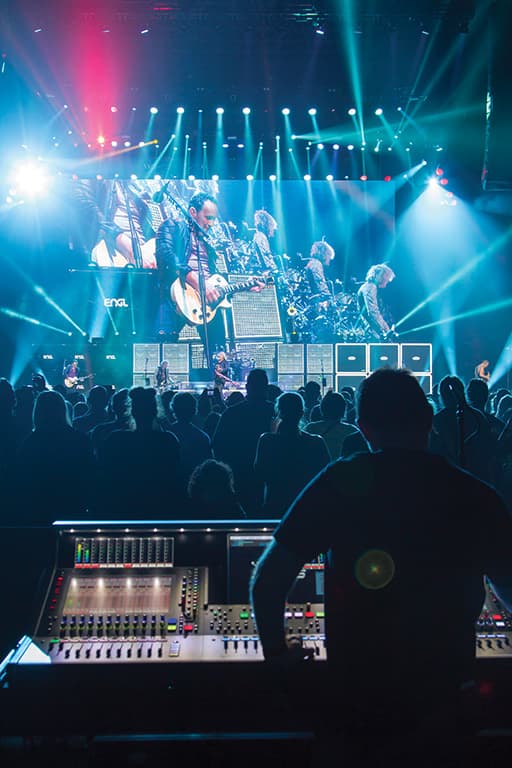


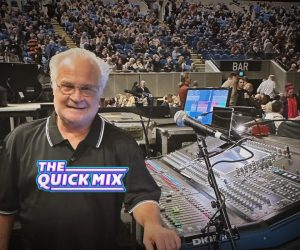


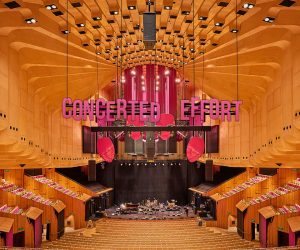






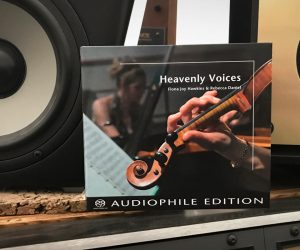



RESPONSES